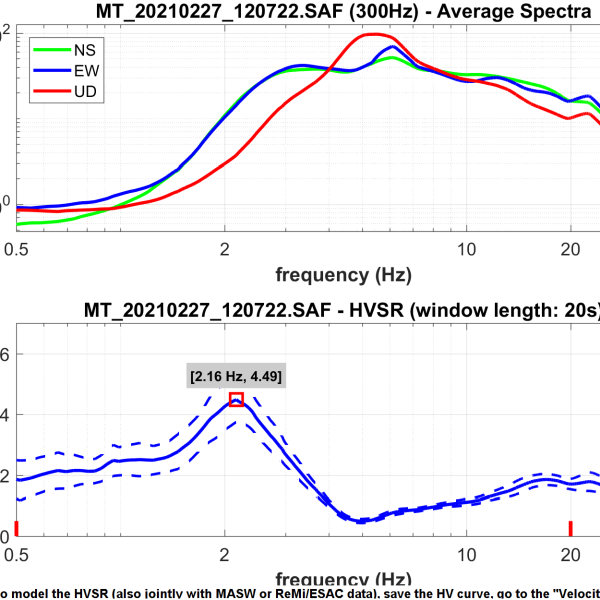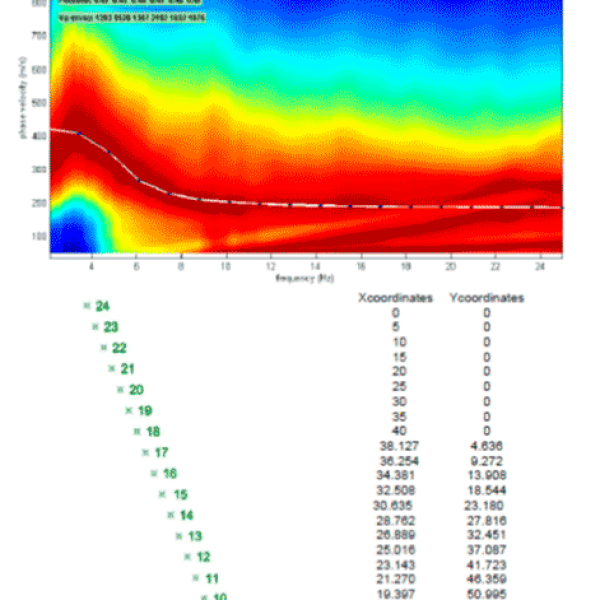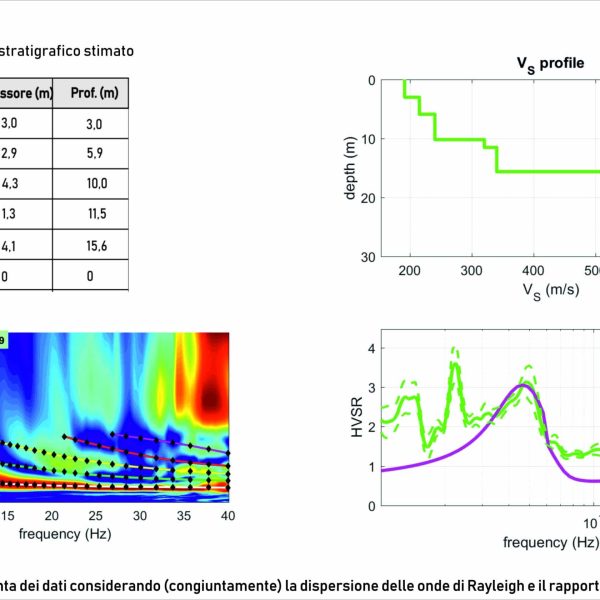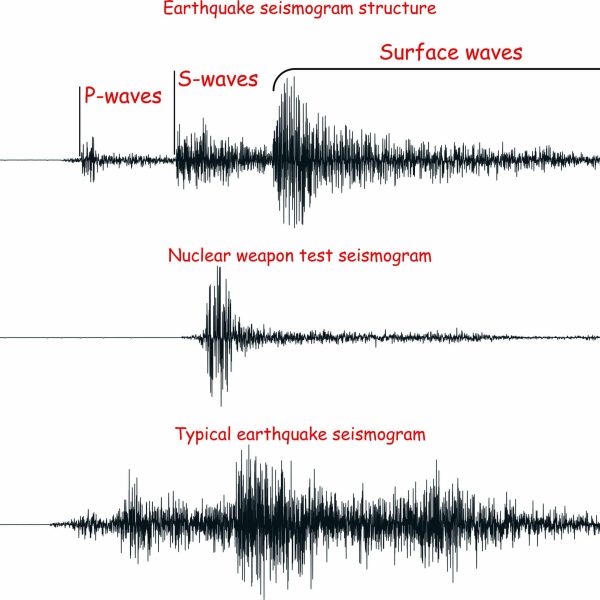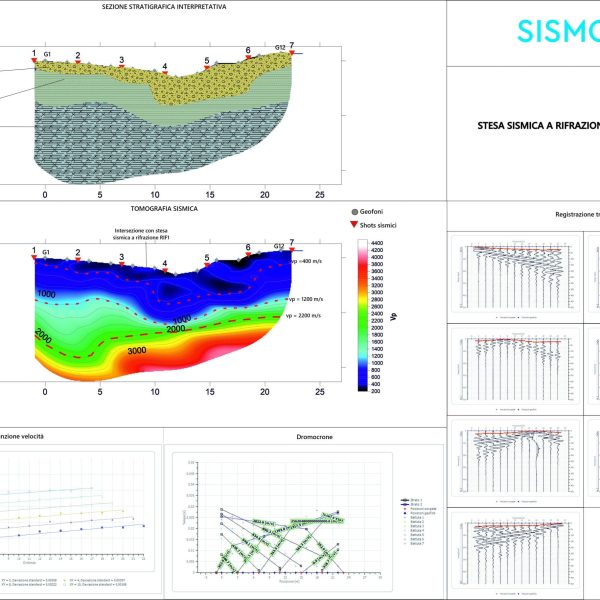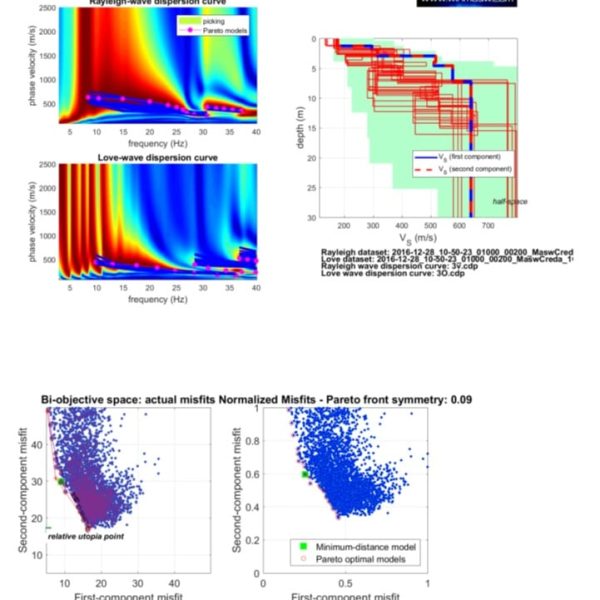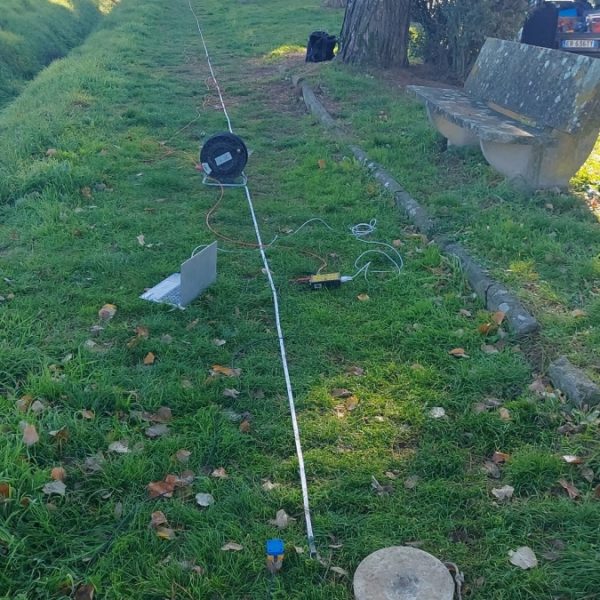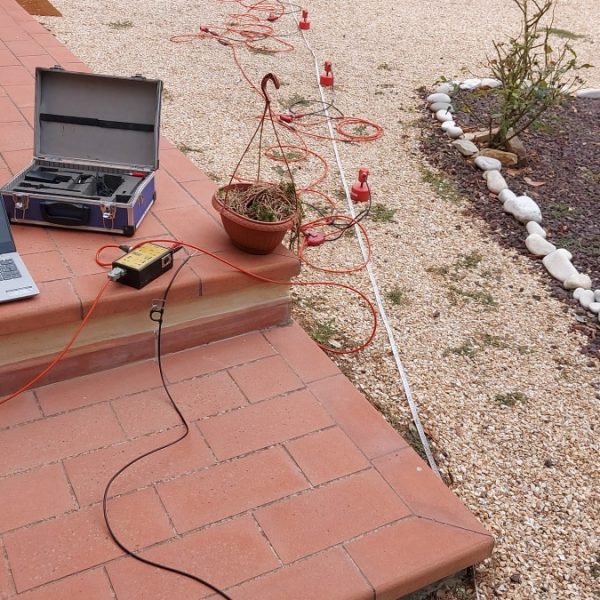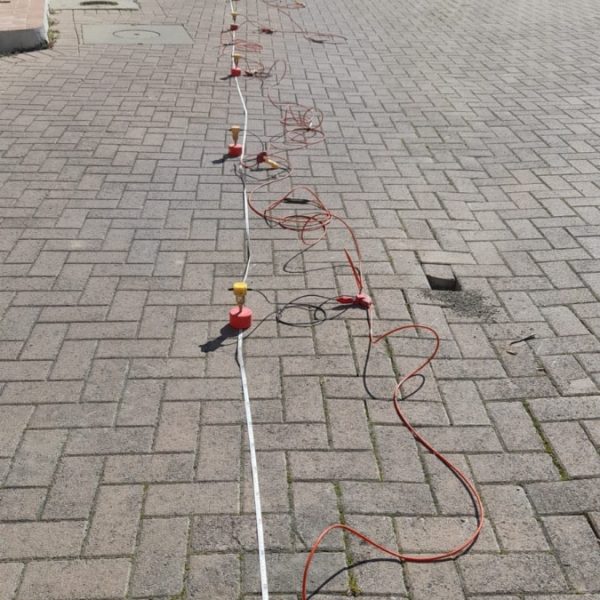Geophysical surveys
Geophysical surveys
Seismic prospecting is a geophysical investigation method based on the study of the propagation of both natural and artificially generated seismic waves. They depend on the elastic characteristics of the land: the principles of this methodology are based on the theory of elasticity. Seismic waves travel underground at different speeds through the different lithotypes and undergo the phenomena of reflection, refraction and diffraction on the surfaces of geological discontinuity.
The propagation speed of a seismic impulse can also change within the same lithotype because, due to variations in compaction, fracturing, porosity, etc., the elastic characteristics change. The main seismic prospecting methods make use of reflected waves (reflection method) of refracted waves (refraction method) or environmental noise (passive techniques) Many of the seismic methodologies are based on the technique of generating seismic waves at a point on the ground ( explosive charges, seismic cannon, hammer, etc.) and to detect their arrival, using sensors (geophones), in other points.
Through the study of the seismograms and the identification of the wave types, it is possible to trace the geometric arrangement and the elastic properties of the lithotypes present below the survey area. For the investigation of the subsoil both volume waves (P waves) and shear waves (S waves) and surface waves (Rayleigh or Love) are used. Volume and shear waves are mainly used in reflection, refraction and down hole techniques while surface waves in MASW-type techniques.
Sismoelettrica S.r.l. it also performs joint elaborations of seismic surveys, in addition to the classic method linked to the identification of the modal curves, for the interpretation of the velocity spectrum in its lowest frequency part (<<5-10 Hz) or in the deepest portions of the geophysical model , the HVSR and ESAC curves can also be considered.
Services
- Seismic refraction in P and Sh waves
- Reflection seismic
- Down-Hole and Cross-Hole seismic
- MASW (Multichannel Analysis of Surface Waves) surveys with Rayleigh and Love waves
- Passive seismic, ESAC (Extended Spatial Autocorrelation); single station measurements with HVSR technique (Horizontal to Vertical Spectral Ratio)
- Joint Processing, MASW with Rayleigh and Love waves, MASW-HVSR, MASW-ESAC.
Applications
- Applications: Estimation of the shear wave velocity VS along the vertical and/or along the section
- Estimation of the Vseq parameter (Ministerial Decree 17/01/2018 and subsequent amendments)
- Two-dimensional seismic reconstruction (2D surveys)
- Variation of the fracturing layer of the rock
- Thickness of the debris cover
- Course of the substrate for the evaluation of the stability of the slopes
Evaluation of the thickness of the landslide bodies and reconstruction of the slip plane
- Classification of rock masses
- Stratigraphy of alluvial soils determination of the elastic parameters of the rock
- Measurement of the fundamental resonance frequency of soils and depth estimation of the impedance contrast
- Determination of the elastic parameters of the rock at small deformations
Equipments
- Modular 24-channel 24-bit digital multi-channel seismograph from the company SARA electronic instruments S.r.l
- 4.5Hz, 10Hz and 100Hz vertical geophones
- 4.5Hz and 10Hz horizontal geophones
- Geobox tromograph of the company SARA electronic instruments S.r.l.
- Down-Hole triaxial geophone

